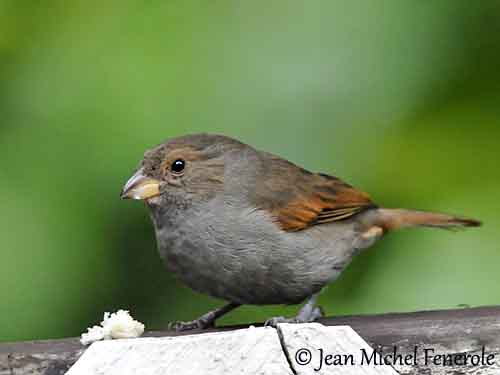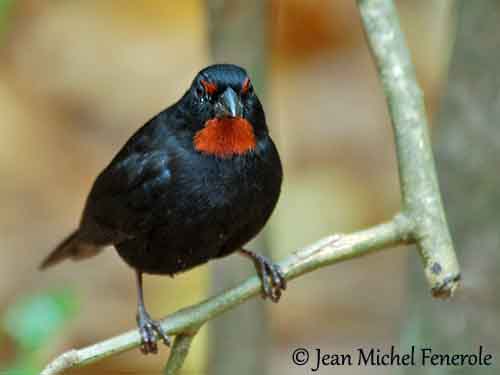
Fr: Sporophile rougegorge
All: Bartgimpelfink
Esp: Semillero Gorjirrojo
Ita: Ciuffolotto delle Piccole Antille
Nd: Antillendikbekje
Sd: Antillfink
Photographer :
Jean Michel Fenerole
Photos d’Oiseaux du monde
Text by Nicole Bouglouan
Sources :
HANDBOOK OF THE BIRDS OF THE WORLD Vol 16 by Josep del Hoyo- Andrew Elliot-David Christie – Lynx Edicions – ISBN: 9788496553781
BirdLife International (BirdLife International)
Neotropical Birds – Cornell Lab of Ornithology
Birds & Co – Les Oiseaux de Martinique
Chipper Woods Bird Observatory
Lesser Antillean Bullfinch
Loxigilla noctis
Passeriformes Order – Thraupidae Family
INTRODUCTION:
The Lesser Antillean Bullfinch is resident and abundant on several islands of the Lesser Antilles except the Grenadines. This species is sexually dimorphic. It frequents mainly forested areas at all elevations, but it also occurs in gardens and at bird feeders in towns.
DESCRIPTION OF THE BIRD:
Biometrics:
Length: 14-16 cm
Weight: 13-23 g (depending on the subspecies)
The adult male of the nominate race has black plumage overall, except the red throat patch and the small red spot above the black lores.
The stout bill is black. The eyes are dark brown. Legs and feet are dark grey.

The female has brown plumage with rufous upperwing-coverts and uppertail-coverts. The underparts are mostly grey.
The bill is brown, with yellowish lower mandible. The eyes are dark brown. Legs and feet are greyish.
The juvenile resembles female.
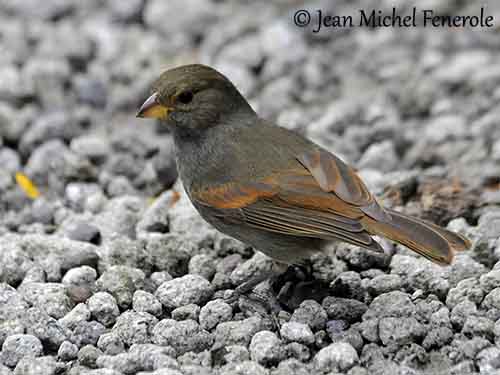
SUBSPECIES AND RANGE:
We can find 8 subspecies.
L.n. ridgwayi is found on St John (Virgin Is), St Croix (US Virgin Is) in N Lesser Antilles. It has rufous undertail-coverts and mostly greyish-black plumage with slate-grey underparts.
L.n. coryi is found in NW Lesser Antilles. This one is slightly darker than previous.
L.n. desiradensis occurs on Desirade, in NC Lesser Antilles. It has rufous undertail-coverts sometimes mixed with black.
L.n. dominicana is found on Guadeloupe, Is des Saintes, Marie Galante and Dominica, in NC Lesser Antilles. It is similar to previous.
L.n. noctis (here described and displayed) occurs on Martinique, in SC Lesser Antilles.
L.n. sclateri occurs on St Lucia, in SC Lesser Antilles. It resembles nominate race but it is smaller.
L.n. crissalis is found on St Vincent, in SC Lesser Antilles. This race has larger rufous throat patch, and extensively chestnut-rufous undertail-coverts.
L.n. grenadensis occurs on Grenada, in S Lesser Antilles. It is similar to previous, but it has smaller throat patch, and partially black undertail-coverts.
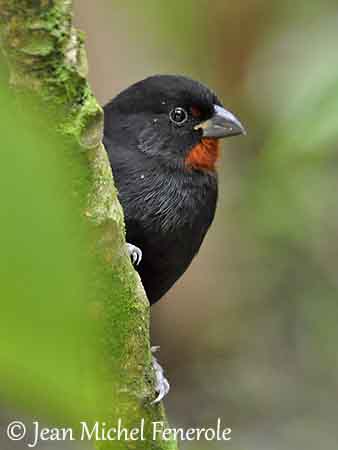
HABITAT:
The Lesser Antillean Bullfinch is common in various forested habitats at all elevations between sea-level and 900 metres. It is found in dry forest, mangroves, rainforest, second growth, forest understorey and urban gardens too.
CALLS AND SONGS: SOUNDS BY XENO-CANTO
The Lesser Antillean Bullfinch’s call is “check”. The song is a fast warbling, a trill of several “tseep” notes followed by 4-5 rising whistles, ending with sharp “chuck” or a buzz.
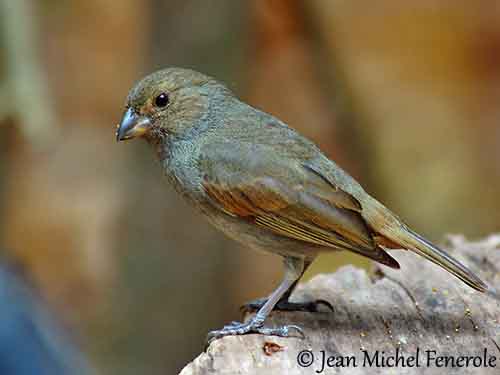
BEHAVIOUR IN THE WILD:
The Lesser Antillean Bullfinch feeds on a variety of food items such as arthropods, nectar from flowers, fruits and seeds.
The nectar is taken from a small hole at base of the calyx. The fruits are secured by the feet while the bird pecks at them. This species forages usually high in trees, but it may occasionally come closer to the ground.
Information about courtship displays is lacking, but we can suggest that the male displays to enhance the red throat patch in front of the female.
They are socially monogamous. The male is territorial during the egg-laying period, and remains close to its mate.
It can be seen alone, but they are often in pairs.
The Lesser Antillean Bullfinch is mainly sedentary in its range, with probably some dispersion.
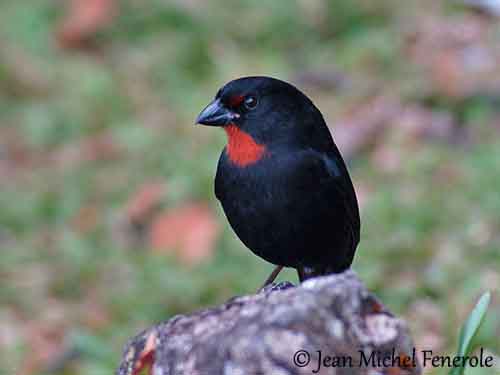
REPRODUCTION OF THIS SPECIES:
The Lesser Antillean Bullfinch can breed all year round, with a peak between April and August.
The nest is a spherical structure with side entrance, between one and five metres above the ground in bush, shrub or tree, hedgerow and even near human habitations. It is made with twigs, dried leaves, plant fibres and grass.
The female lays 2-4 bluish-white eggs with fine red specks. The chicks are altricial and are quickly covered with blackish down. The nesting period lasts about two weeks. No more information.
PROTECTION / THREATS / STATUS:
The Lesser Antillean Bullfinch is relatively common in the Lesser Antilles, and the population is suspected to be stable.
This species is not currently threatened.
